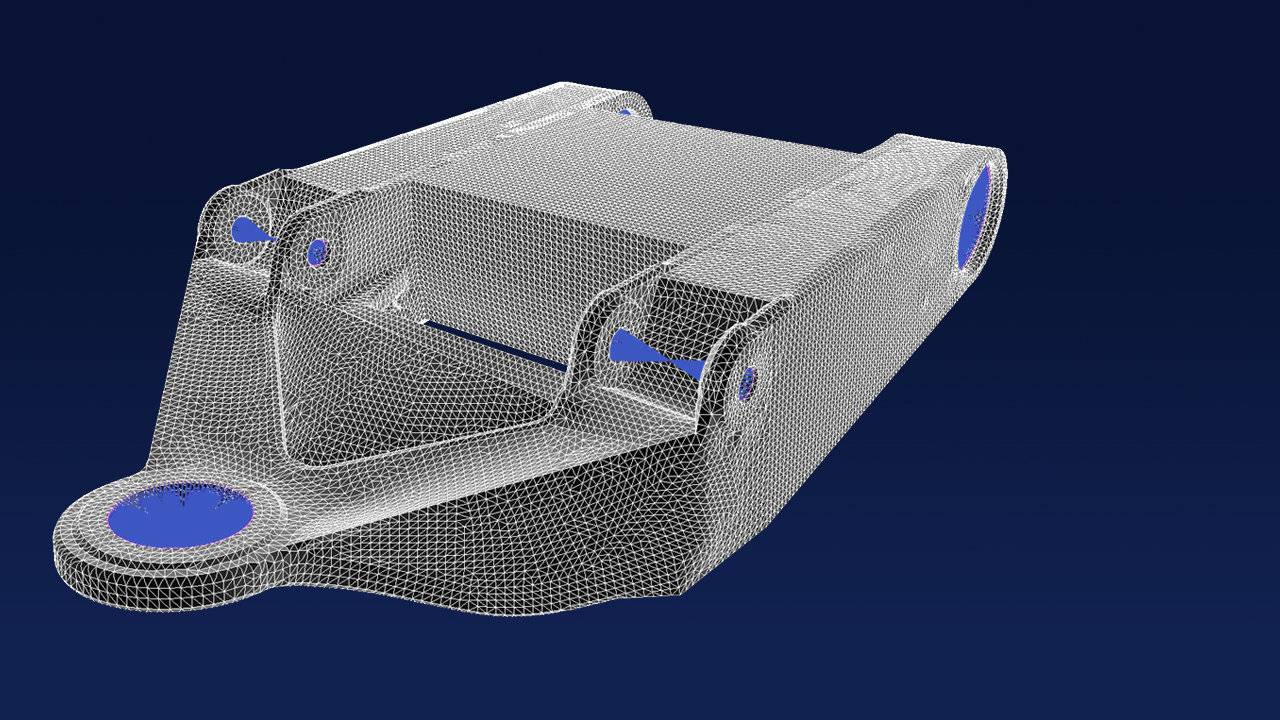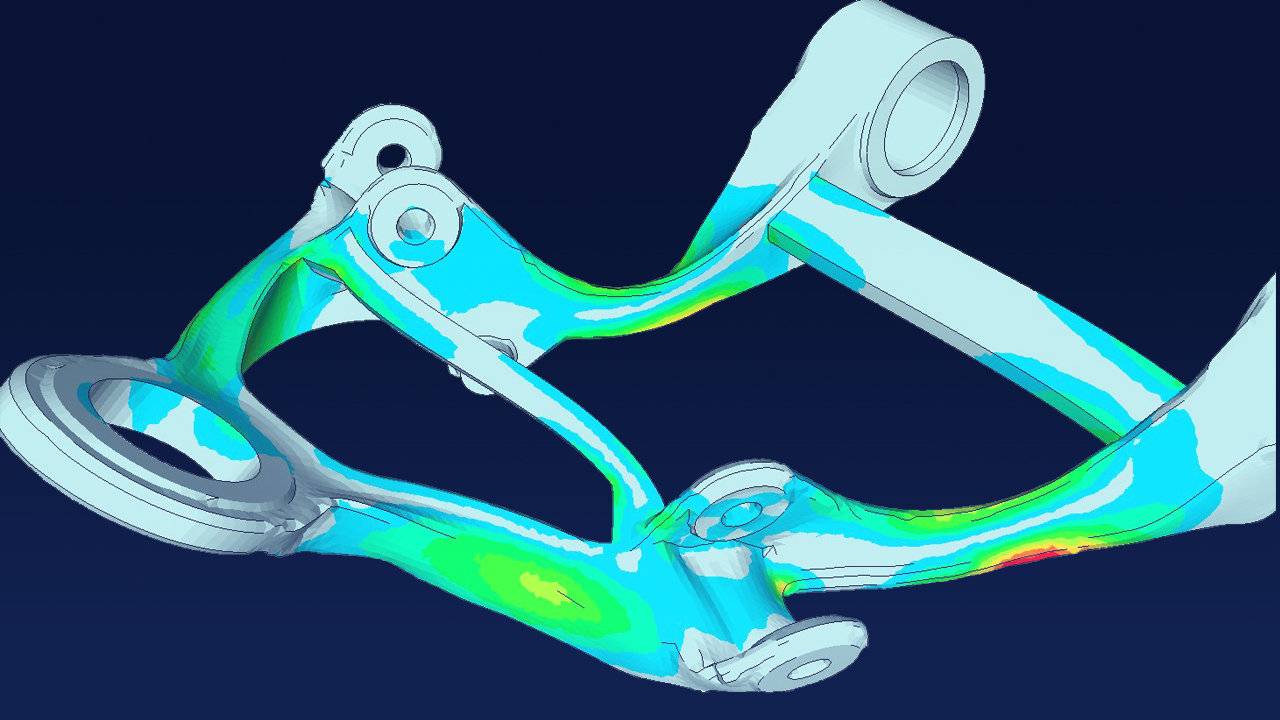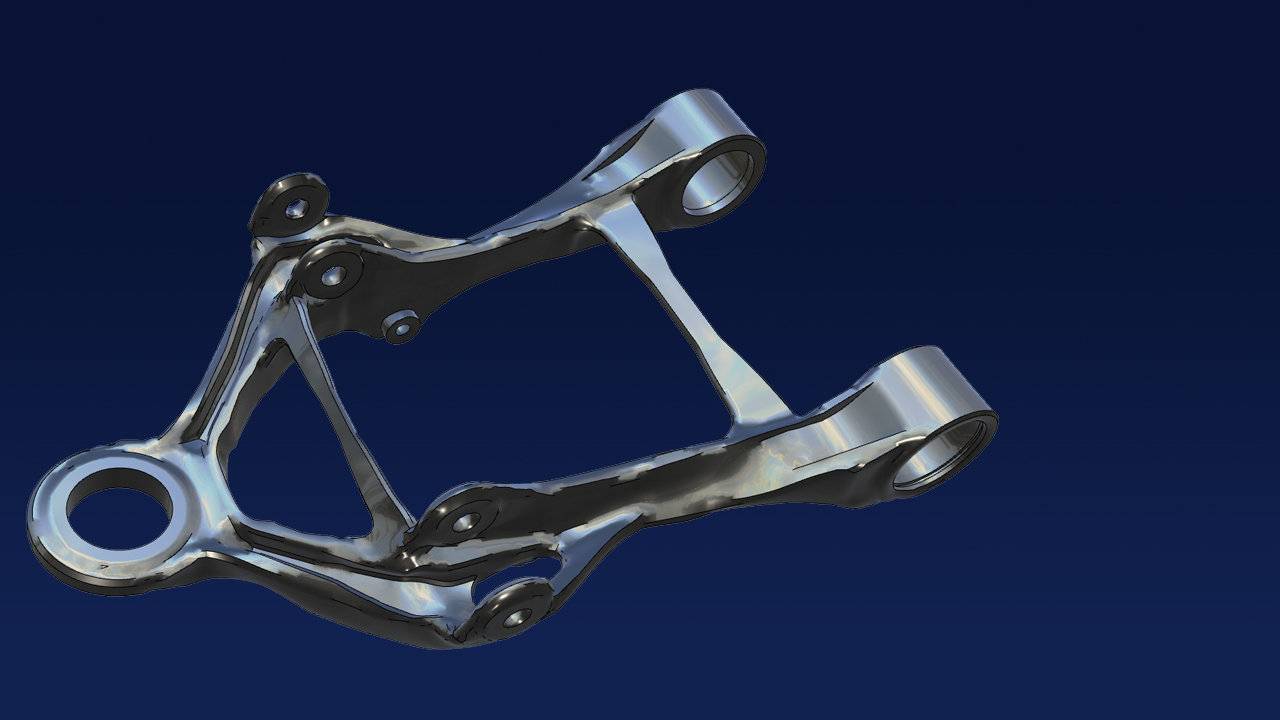Topological optimization
BACKGROUND
Given the need to design components that improve vehicle performance and meet greater regulatory and cost restrictions, the need arises to use topology optimisation as a working tool. Using this methodology, the SOLUTE team has redesigned components for the automotive and railway sector, allowing significantly reducing their weight as well as withstanding more restrictive conditions for implementation in new vehicles with higher performance and more stringent design requirements.
The automotive industry uses synergy strategies with the components between the different vehicles, with the aim of optimising costs in a highly competitive sector and the markets it serves. For this reason, reusing and sharing are common practices as well as adapting components between different models and even variants of the same vehicle. To adapt to the new objectives of new variants, we must carry out an optimisation process of the parts, affecting their shape and materials, with the same set of boundary conditions and with specified objectives or requirements.
One of the avenues for achieving this new improved variant is topology optimisation, a solution SOLUTE has been offering from the start of their integration in specific structural analysis software. The different challenges SOLUTE has had to face using this technique have had the purpose of reducing the weight, the valuation of materials, the adaptation to manufacturing techniques and the increase in structural performance.
RESULTS
The optimisation process carried out by SOLUTE has allowed redesigning suspension components, test benches and railcar hitches, among other components, with 15-30% weight reductions and capable of substantially withstanding structural requirements that are much more severe than those of the original design.
The methodology and results of some cases have been presented at the DASSAULT SYSTEMES' annual user’s congress in Madrid, which generated interest in the audience, just like the success case of the TOSCA software in the optimisation for developing a component.
EXPERIENCE
For more than 10 years now, SOLUTE has been collaborating very closely with the R&D departments of the leading companies in the automotive sector (vehicle manufacturers and component suppliers) in component design optimisation for different disciplines and through static, dynamic, thermal and aerodynamic structural analysis. For the departments in charge of developing new products, SOLUTE carries out a functional simulation of the products, providing solutions that will be included in the final product.
Through an iterative process in which a target weight, design/manufacturing restrictions and load scenarios are set, the structural analysis software for topology optimisation provides a set of organic concepts proposals that cannot be manufactured.
Through an iterative process, in which a target weight, design/manufacturing constraints and loading scenarios are established, the structural analysis software for topological optimisation makes proposals for non-manufacturable organic concepts.
METHODOLOGY
As a tool to achieve the project's objectives, the topology optimisation technique is used as the basis for redesign. With the use of this capability we can begin by defining the available space for determining design concepts that meet the objectives and restrictions as well as the functional requirements of the part. In this case, the requirements are defined using the mechanical loads scenario obtained from a preliminary study, specifically a multibody simulation of the vehicle.
The work flow begins with an analysis of the restrictive scenarios of the loads the part may be subjected to as part of a mechanical system. With the sizing scenarios established, restrictions are identified resulting from the manufacturing process, the joining of systems and other non-modifiable shapes, as well as the maximum work volume that allows the tool to widen the spectrum of proposals and start the optimisation.
Finally, through an iterative process in which a target weight, design/manufacturing restrictions and load scenarios are set, the structural analysis software for topology optimisation provides a set of organic concepts proposals that cannot be manufactured. Based on the experience of the specialist and feedback from the customer, the concepts are turned into a design that can be industrialised, and that is once again evaluated in real scenarios to verify all requirements are met.
Wind
Energy and weather forecast for renewable operators
Weather and energy forecast service through the training of artificial intelligence algorithms.
Wind
Study of welded and bolted joints
Study of all the types of mechanical joints between wind turbine components, covering from the blade to the foundation, with the aim of ensuring the strength and durability of the turbine assembly.


